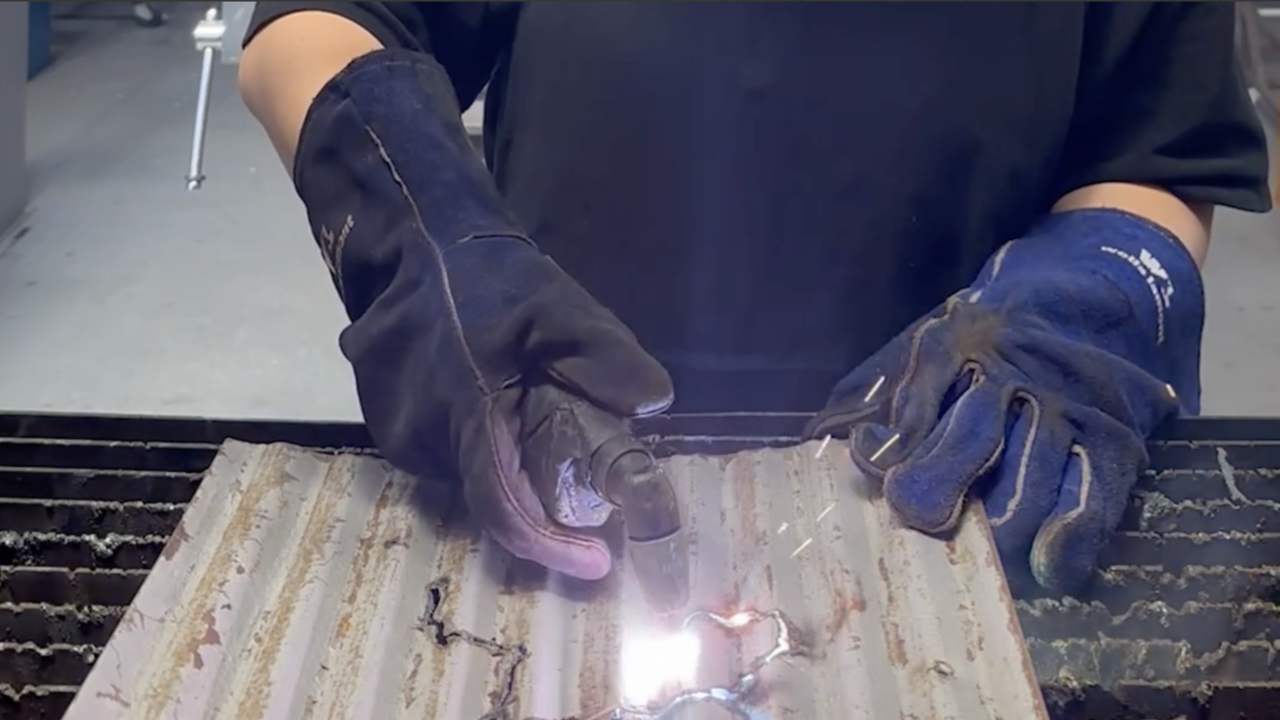James Richards

James Richards is a video collagist: like an obsessive character in a short story by Jorge Luis Borges, he finds sequences and images, both venerating and pondering them in a personal, sacramental way. His specially commissioned two-screen video, Not Blacking Out, Just Turning the Lights Off (2011), has a curious conceit: viewers are required to get up halfway through the film, turn around and face the other way as the second part is shown on the opposing screen. With a full house the action felt eccentric, less so on one’s own. Borges might have smiled. The gallery was painted mint green and laid with a similarly hued carpet. In a talk at the gallery, Richards mentioned trying to replicate the way in which people commonly view things – often on screens in public spaces, as they hustle by. Likewise, here at the Chisenhale, he appeared to be trying to get away from the typical black-box viewing process, substituting it with a more off-hand PC World retail experience. Whether this approach really worked, or helped relay the delicate associations that seem the best part of Richards’ work, is not really worth pursuing. The main thing it revealed was the artist’s love of combinations, of intuitively trying things, of avoiding too much justification, of letting the material have its own fun.
In terms of the film itself, Richards is something of an electronic beachcomber. The young, London-based artist takes sequences, often lifted from DVDs bought from Amazon, mixes and re-assembles them in an open and sensitive way. Sometimes he takes months to mull over and digest elements and often interrogates himself as to why he’s attracted to them. He hardly ever uses his own video camera, though he has one. There is a sense in which all of Richards’ work is forever open – bits may be changed and re-visited, or the same sequence may crop up later in another work. He is forever obsessing about the elements and trying to place them where they fit best.
Not Blacking Out … induces a kind of dreaminess; there is a consistent wonder about human beings, what we are and what we are made of. Medical footage, night-vision, cigarettes, light bulbs, people in lonely spots, lots of blackness, shapes emerging from darkness and fading away: the overall impression is that these sequences are private and that the maker does care about them and the people and things they contain. Richards is neither pointlessly shocking nor seeking the vacuous extremes that many artists attracted to found footage often try to evoke.
Richards has also made sculptures and designed viewing pods, as he did for the ‘Infermental’ show at Focal Point Gallery, in Southend, in 2010. In interviews, he often prefers to talk of footage as ‘material’, almost as stuff he stores in attic boxes and brings out all the time. He rarely mentions the ideologies or the literal meanings that the footage inevitably carries; he seems to avoid talking about the semiotics of footage, preferring to see disparate sequences as neutral. Richards seems to gloss over what they are ‘about’ in favour of their metaphorical or even spiritual feeling. In this sense, he regards found footage as ‘stuff’ – and he’s just looking for the unexpected combination, a place where one kicks off the other. Richards is no Marxist structuralist filmmaker: he’s unashamedly artistic, building things up, playing until they feel right; a bricoleur–poet making assemblages for the eyes with not infrequent appeals to the heart. Additionally, he is attracted to scenes that revel in their own wordlessness, their own material. In this way, as one turns on one’s bench, one knows this is a kind of pure video art. It is not the start of a debate, or a piece that needs later discussion with others – this is a private matter.
A further attractive trait is that Richards likes to work with other artists and to feed their work into his own exhibitions. The Chisenhale show included a sequence of events designed by the artist to accompany the main installation, which draws many other artists into his orbit, such as George Kuchar and Steve Reinke. In fact, loosely totting it up, alongside his own exhibition, he is showing more than two hours of other artists’ work. Now how many artists would do that?
















